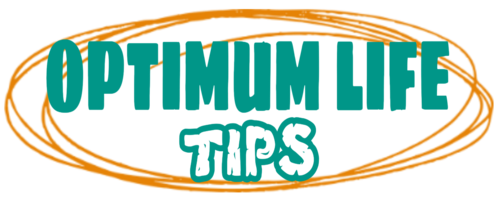Gaining a competitive edge in today’s fast-paced business environment requires efficient workflow management. By streamlining your daily tasks and optimizing business processes, you can enhance productivity, maximize performance, and achieve better outcomes. In this article, I will share practical tips and workflow optimization secrets to help you improve efficiency and streamline your daily tasks.
To start, as an HR executive, it’s crucial to understand the strengths of each team member and align tasks accordingly. By leveraging your team’s talents, you can foster collaboration and find innovative solutions that drive the company’s goals forward. Remember, effective workflow management starts with people.
Investing in a user-friendly project management application, such as Wrike, can significantly improve workflow efficiency. With standard HR workflows like onboarding and offboarding, having a consistent and standardized process ensures tasks are completed smoothly and effectively.
Key Takeaways:
- Understanding your team’s strengths and leveraging them fosters collaboration and better outcomes.
- Investing in a user-friendly project management application streamlines HR workflows.
- Focusing on one task at a time and prioritizing tasks enhances efficiency.
- Tracking checklists and utilizing project management tools help manage HR processes effectively.
- Leveraging task lists, the Inbox Zero approach, and SMS for urgent matters enhances productivity.
Invest In A User-Friendly Project Management Application
When it comes to streamlining your HR workflows, investing in a user-friendly project management application is key. A reliable and intuitive tool, such as Wrike, can simplify and accelerate your standard HR processes, such as onboarding and offboarding. By implementing a consistent and standardized process, you can ensure that all stakeholders involved in HR tasks follow the same efficient workflow.
A user-friendly project management application provides a centralized platform where HR teams can collaborate, communicate, and track progress, leading to smoother and more productive operations. With its user-friendly interface, even team members with limited technical expertise can easily navigate and leverage its full potential.
Here are some benefits of using a user-friendly project management application:
- Efficiency: Streamline and automate repetitive HR tasks, saving valuable time and reducing errors.
- Consistency: Implement a consistent and standardized process, ensuring that every HR task is executed in a reliable and predictable manner.
- Collaboration: Foster collaboration among HR team members, facilitating effective communication and knowledge sharing.
- Visibility: Gain real-time visibility into the progress of HR projects, enabling better tracking and decision-making.
Case Study: How Wrike Transforms HR Workflows
“Wrike has revolutionized our HR workflows. With its user-friendly interface and robust features, we’ve been able to streamline our hiring processes and improve overall efficiency. The standardized templates and automated task assignments have saved us significant time and effort, allowing us to focus on delivering exceptional HR services to our employees.”– Jane Thompson, HR Manager at Acme Corporation
With a user-friendly project management application like Wrike, HR professionals can establish consistent and efficient workflows that enhance productivity and employee satisfaction. By standardizing the HR processes, you create a more reliable and effective system that can handle frequent HR workflows with ease.
Next, we’ll delve into the importance of focusing on one thing at a time and prioritizing tasks to optimize your workflow efficiency.
Focus On One Thing At A Time
To enhance productivity and streamline your daily workflow, it is important to focus on one task at a time. By devoting your full attention to each task, you can ensure that it is completed efficiently and effectively. This approach allows you to prioritize tasks based on their importance and allocate dedicated time slots for different projects.
When you focus on one thing at a time, you can avoid getting overwhelmed by multiple tasks and prevent them from falling through the cracks. By immersing yourself in one task, you can give it the attention and concentration it deserves, resulting in better outcomes and higher-quality work.
Creating dedicated time slots for different projects is crucial. It helps you allocate the necessary amount of time and resources to each task, ensuring that they receive the attention they need. By managing your time effectively, you can avoid rushing through tasks and deliver high-quality work consistently.
“The key is not to prioritize what’s on your schedule, but to schedule your priorities.” – Stephen Covey
Benefits of Focusing on One Thing At A Time
There are several benefits to adopting a “one thing at a time” approach:
- Improved focus and concentration
- Reduced distractions and multitasking
- Enhanced productivity and efficiency
- Higher-quality work
- Reduced stress and overwhelm
By focusing on one task at a time, you can devote your full attention to each task, resulting in improved focus and concentration. This allows you to produce higher-quality work and avoid costly mistakes that can occur when you’re juggling multiple tasks simultaneously.
Avoiding distractions and multitasking is essential for maintaining productivity and efficiency. Research has shown that multitasking can actually decrease productivity and increase errors. By focusing on one thing at a time, you can give your full attention to each task and complete it more efficiently.
Moreover, focusing on one task at a time helps reduce stress and overwhelm. By breaking down your work into manageable chunks and prioritizing tasks, you can approach them with a clear mind and a sense of control. This leads to reduced stress levels and a more enjoyable work experience.
When you prioritize tasks based on their importance, you ensure that the most critical tasks are completed first. This allows you to meet deadlines and deliver high-quality work consistently.
Embracing the “one thing at a time” approach can significantly improve your workflow and productivity. By focusing on one task at a time and dedicating specific time slots for different projects, you can effectively manage your workload and achieve better results.
| Benefits of Focusing on One Thing At A Time |
|---|
| Improved focus and concentration |
| Reduced distractions and multitasking |
| Enhanced productivity and efficiency |
| Higher-quality work |
| Reduced stress and overwhelm |
Track Your Checklists
When it comes to managing HR processes, staying organized and on top of deadlines is crucial. That’s where deadline checklists and project management tools like Asana come in handy. By utilizing these tools, you can ensure that you never miss an important step and keep your HR processes running smoothly.
Creating workflow templates for essential HR tasks such as onboarding, offboarding, and the recruitment process is a game-changer. These templates provide a consistent framework that eliminates any guesswork, standardizes procedures, and ensures that nothing falls through the cracks. With a predefined checklist in place, you can streamline your HR processes and achieve greater efficiency.
Deadline Checklists: Keeping You on Track
Implementing deadline checklists allows you to set clear milestones and stay focused on meeting deadlines. By breaking down complex tasks into manageable steps and assigning specific deadlines to each, you create a roadmap that guides your HR team towards success. With a quick glance at your checklist, you can easily identify any bottlenecks, ensure all necessary tasks are completed, and avoid any unnecessary delays.
In addition to traditional checklists, project management tools like Asana provide a centralized platform where you can create and track your checklists digitally. This not only enhances collaboration and transparency within your team but also offers convenient features like reminders and notifications to keep everyone accountable.
Workflow Templates: Consistency and Efficiency
Workflow templates serve as a blueprint for your HR processes, providing a consistent approach that maximizes efficiency. By creating templates for common HR tasks such as onboarding, offboarding, and the recruitment process, you eliminate the need to reinvent the wheel each time. Standardized templates ensure that every step is accounted for, reducing errors, and promoting a seamless experience for both employees and HR personnel.
With project management tools like Asana, you can easily create and save workflow templates, making them readily available for future use. Whether you’re onboarding a new employee or conducting a performance review, you can leverage these templates to ensure that each process is executed consistently and efficiently.
By tracking your checklists and utilizing workflow templates, you can optimize your HR processes and achieve greater productivity. Take advantage of project management tools like Asana to streamline your tasks, meet deadlines, and create a more efficient HR workflow.
Leverage a Task List
Implementing a task list is a powerful strategy for optimizing workflow efficiency and ensuring an efficient day. By organizing your tasks and prioritizing them, you can stay focused and accomplish more in less time. A task list helps you declutter your mind, prevents important tasks from slipping through the cracks, and provides a visual representation of your progress.
One popular productivity technique that complements a task list is the Inbox Zero approach. Inbox Zero is a method for managing email and other incoming messages with the goal of keeping your inbox empty or close to it. By regularly reviewing, responding, and organizing your inbox, you can avoid the overwhelming feeling of an overflowing inbox and stay on top of urgent matters.
In addition to email, another communication tool that can be leveraged for urgent matters is the short message service (SMS). SMS allows for quick and direct communication, making it an effective channel for addressing time-sensitive issues. By integrating SMS into your workflow, you can efficiently handle urgent matters and ensure timely responses.
To illustrate the importance of leveraging a task list, consider the following scenario:
“I wake up in the morning feeling organized and motivated for a productive day. After a good night’s sleep, I have a nutritious breakfast and squeeze in a quick exercise session. With a clear mind and energized body, I sit down at my desk and review my task list. It outlines the important tasks for the day, and I prioritize them based on their urgency and impact on my goals.
As I work through my tasks, I check them off my list, providing a sense of accomplishment and progress. I also stay mindful of the Inbox Zero approach, regularly checking and organizing my emails to prevent any important messages from slipping through. Additionally, I use SMS for urgent matters, allowing for quick and efficient communication when timing is crucial.
By leveraging a task list, combining it with the Inbox Zero approach, and utilizing SMS for urgent matters, I maximize productivity and ensure that my day is efficient and productive.”
| Benefits of Leveraging a Task List |
|---|
| 1. Improved organization and task prioritization |
| 2. Enhanced focus and reduced distractions |
| 3. Clear visualization of progress |
| 4. Prevention of important tasks from being forgotten |
| 5. Increased productivity and efficiency |
Automate Where You Can
In today’s fast-paced business environment, automating processes has become crucial for the efficient management of HR tasks. By automating routine and repetitive processes, the HR team can optimize their workflow and focus on more valuable tasks that require human intervention.
One area where automation can significantly benefit HR operations is in the human resource information system (HRIS). Implementing a robust HRIS not only centralizes employee data but also automates various administrative processes, such as timekeeping, leave management, and payroll processing. This frees up valuable time for HR professionals to concentrate on strategic initiatives that drive employee engagement and satisfaction.
Performance management is another area that can benefit from automation. By utilizing performance management software, HR teams can automate performance appraisals, goal-setting, and feedback processes. This not only saves time but also ensures consistency and fairness in performance evaluations.
Employee surveys, essential for gathering feedback and insights, can also be automated. Online survey tools provide HR teams with the ability to design, distribute, and analyze surveys efficiently. By automating this process, HR professionals can collect valuable feedback from employees, identify areas for improvement, and measure employee engagement levels.
Additionally, automating the open enrollment process can reduce administrative burden and errors. With the use of online benefits platforms, employees can easily navigate through different benefit options, make selections, and receive confirmation electronically. This streamlines the enrollment process, ensuring accuracy and saving time for both HR teams and employees.
| Process | Benefits of Automation |
|---|---|
| HRIS | Centralized employee dataAutomated administrative processesImproved data accuracy and reporting capabilities |
| Performance Management | Automated performance appraisalsStreamlined goal-setting and feedback processesConsistency and fairness in evaluationsEfficient performance tracking |
| Employee Surveys | Efficient survey design and distributionReal-time analytics and insightsMeasure employee engagement levelsIdentify areas for improvement |
| Open Enrollment | Streamlined benefits selection processReduced administrative burdenImproved accuracy and complianceTime savings for HR teams and employees |
Automating processes within the HR department not only saves time and improves workflow efficiency, but it also allows HR professionals to focus on what truly matters: the people. By leveraging automation tools and technology, HR teams can better engage with employees, drive organizational success, and create a positive work culture that attracts and retains top talent.
Get In The Cloud
Transitioning from legacy applications to a cloud-based platform offers numerous benefits for optimizing workflow efficiency. By embracing a flexible structure and leveraging the power of a cloud-based platform, businesses can automate repetitive tasks, leading to faster solutions and streamlined processes.
Cloud-based platforms provide the scalability and adaptability necessary for businesses to thrive in today’s fast-paced digital landscape. With the ability to access data and applications from anywhere, at any time, companies can ensure seamless collaboration and productivity across teams, regardless of location.
The Power of Automation
One of the key advantages of moving to the cloud is the automation of repetitive tasks. By leveraging advanced technologies and cloud-based tools, businesses can eliminate manual, time-consuming processes and free up valuable resources for more strategic initiatives. Automation not only improves accuracy but also reduces the risk of human error, ultimately leading to more efficient operations.
For example, an HR department can automate routine tasks such as employee onboarding and offboarding, performance reviews, and leave management. By automating these processes, HR professionals can focus on more strategic activities, such as talent acquisition and employee development, leading to a more productive and engaged workforce.
Furthermore, cloud-based platforms provide faster solutions compared to traditional on-premises systems. With scalable infrastructure and built-in redundancies, businesses can expect reliable and efficient performance, even during peak demand periods. This allows teams to accomplish tasks more quickly, meet deadlines, and deliver high-quality results.
“The transition to a cloud-based platform has revolutionized our workflow. We have seen a significant reduction in manual tasks, which has allowed us to focus on value-added activities. The flexibility and automation offered by the cloud have made our processes faster and more streamlined.”
By implementing a cloud-based platform, businesses can experience transformative changes in their workflow. With flexible structures and the ability to automate repetitive tasks, organizations can achieve faster, more efficient solutions, fostering innovation and growth in the digital age.
Assess Your Team
To optimize workflow efficiency and maximize productivity, it is crucial to assess your team’s strengths and delegate work accordingly. Recognizing the unique abilities and talents of each team member allows for effective task allocation and improved performance.
By aligning tasks with individuals who possess the necessary skills and expertise, you can enhance productivity and ensure that work is completed efficiently. Delegating work based on team strengths not only maximizes efficiency but also fosters personal growth and development.
Meeting employees’ basic needs is equally important to creating a productive and harmonious work environment. When employees’ needs are met, they feel supported, valued, and motivated to perform their best. This contributes to increased efficiency and overall team success.
One way to assess team strengths is through performance evaluations and regular feedback sessions. These interactions provide valuable insights into each team member’s capabilities and allow for targeted task delegation.
Evaluating Team Strengths
“Individual commitment to a group effort – that is what makes a team work, a company work, a society work, a civilization work.” – Vince Lombardi
During the assessment process, it is important to consider both technical skills and interpersonal qualities. This comprehensive evaluation ensures that tasks are assigned to individuals who not only have the necessary expertise but also possess strong communication, collaboration, and leadership abilities.
Additionally, conducting skills assessments and identifying areas for improvement can help you strategically delegate work and provide targeted training and development opportunities to enhance team members’ capabilities.
Sample Team Assessment Matrix
| Employee | Technical Skills | Interpersonal Skills |
|---|---|---|
| Emma Johnson | Expertise in data analysis and reporting | Excellent communication and problem-solving skills |
| Michael Brown | Proficient in website development and coding | Strong teamwork and leadership abilities |
| Sarah Davis | Skilled in project management and planning | Effective conflict resolution and decision-making skills |
This sample team assessment matrix highlights the diverse strengths of team members, enabling you to delegate tasks that align with their respective expertise and interpersonal skills. By utilizing such a matrix, you can ensure that work is distributed efficiently and effectively, leading to optimized workflow and increased productivity.
Remember, assessing your team, delegating work based on strengths, and meeting employees’ basic needs are key factors in maximizing efficiency and creating a cohesive work environment that drives success. By recognizing and leveraging the talents of each team member, you can foster personal growth, boost morale, and achieve exceptional results.
Choose People Over Process
When it comes to the hiring process, it’s essential to prioritize people over process. While having efficient systems and workflows is important, it’s equally crucial to focus on creating an exceptional candidate experience and recruiting higher-quality candidates.
Automating essential parts of the hiring process can help free up valuable time and resources, allowing HR professionals to dedicate their energy to more meaningful tasks. By automating tasks such as resume screening, application tracking, and interview scheduling, recruiters can streamline their workflow and ensure that they have more time to engage with candidates on a personal level.
One key aspect of prioritizing people over processes is enhancing the candidate experience. Creating a positive and engaging experience for candidates can make a significant impact on attracting and retaining top talent. By providing clear and transparent communication, offering timely feedback, and treating candidates with respect and professionalism, companies can establish a reputation as an employer of choice.
In addition to enhancing the candidate experience, prioritizing people over process can also lead to the recruitment of higher-quality candidates. By focusing on building relationships, understanding candidate motivations, and aligning candidate skills with job requirements, recruiters can identify candidates who are not only qualified but also a great cultural fit for the organization.
Ultimately, the key to successful hiring lies in striking a balance between efficient processes and a people-centric approach. By automating essential parts of the hiring process and placing a strong emphasis on the candidate experience, companies can recruit and retain higher-quality candidates while also ensuring a smooth and efficient hiring process.
In the next section, I will discuss the importance of keeping the end user top of mind and how it can enhance innovation and simplify workflows.
Keep The End User Top Of Mind
When it comes to enhancing efficiency and innovation in your workflows, it is crucial to start with the end user in mind. By understanding the needs and preferences of the individuals who will benefit from your processes, you can simplify workflows and drive meaningful improvements.
One effective way to keep the end user top of mind is by involving new voices and opinions in the workflow design process. This collaborative approach fosters a diverse range of ideas and perspectives, leading to more creative solutions and streamlined processes.
Additionally, prioritizing the end user allows you to identify pain points and areas for improvement. By streamlining workflows and eliminating unnecessary steps or roadblocks, you can enhance the user experience and increase overall efficiency.
By focusing on the end user, you not only optimize workflows but also create an environment that encourages innovation. When individuals feel that their needs are valued and considered, they are more likely to contribute fresh ideas and suggest improvements that can drive your organization forward.
FAQ
How can I optimize workflow and improve efficiency?
You can optimize workflow and improve efficiency by understanding and leveraging the strengths of each team member, aligning tasks accordingly, and investing in user-friendly project management tools. By focusing on one task at a time, utilizing checklists and task lists, automating processes, and utilizing cloud-based platforms, you can streamline your daily tasks and maximize productivity.
How can a user-friendly project management application help streamline HR workflows?
A user-friendly project management application, such as Wrike, can streamline standard HR workflows like onboarding and offboarding. By implementing a consistent and standardized process, it ensures efficiency and effectiveness for all stakeholders involved in HR tasks.
What is the importance of focusing on one thing at a time?
Focusing on one task at a time and prioritizing tasks based on importance is essential to streamlining the daily workflow. By dedicating specific time slots for different projects, tasks are completed efficiently and do not fall through the cracks.
How can I effectively manage HR processes?
To effectively manage HR processes, you can utilize deadline checklists and project management tools like Asana. Creating workflow templates for onboarding, offboarding, recruitment processes, and more ensures consistency and eliminates the chance of missing important steps.
How can a to-do list enhance productivity?
Implementing a task list, combined with the Inbox Zero approach and the use of SMS for urgent matters, can greatly enhance productivity. Starting the day with a good night’s sleep, a nutritious breakfast, and some exercise sets a positive tone for a productive day.
How can automation improve workflow efficiency?
Automating processes allows the HR team to focus on more valuable tasks, such as employee satisfaction and engagement. Implementing automation in areas like HRIS, performance management, employee surveys, and open enrollment saves time and improves overall workflow efficiency.
Why is transitioning to a cloud-based platform important for optimizing workflow?
Transitioning from legacy applications to a cloud-based platform enables flexibility and automation of repetitive tasks. With faster solutions and streamlined processes, daily operations become more efficient and time-saving.
How can I assess my team to maximize efficiency?
Recognizing and maximizing team strengths leads to effective delegation of work and improved efficiency. By aligning tasks with each individual’s abilities, personal growth and development are fostered while meeting employees’ basic needs, resulting in increased efficiency and productivity.
Why should I prioritize people over process in workflow optimization?
Prioritizing people over process and automating essential parts of the hiring process allows more meaningful tasks to be accomplished. This enhances the candidate experience and facilitates the recruitment of higher-quality candidates.
How can I keep the end user top of mind in workflow optimization?
Starting with the end user in mind simplifies workflows and encourages innovation. By involving new voices and opinions, tasks can be completed more collaboratively, leading to a more streamlined workflow and increased efficiency.





